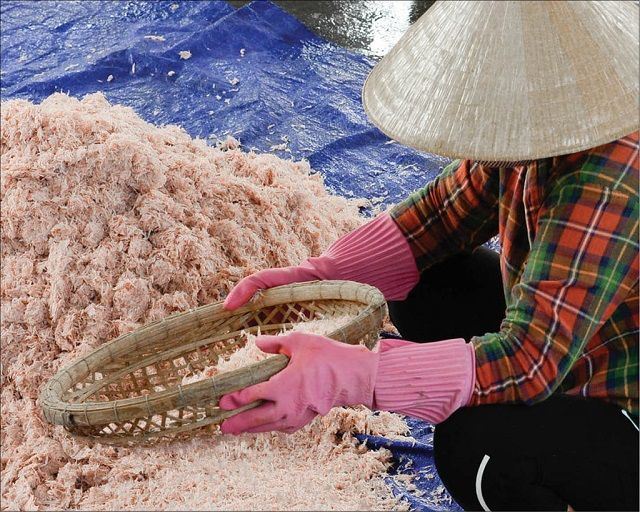The Soul of Hue Cuisine – Tiny Shrimp Fermented Sauce

The Soul of Vietnam Cuisine – Fish Sauce
The extraction of umami from salted anchovies is not something only Vietnam has. But few nations love and use fish sauce as extensively as the Vietnamese do — it's a national obsession, appearing in almost every dish, and even in... drinks.
Take Ancient Rome, for instance. In the cookbook attributed to Apicius, a famed Roman gourmand, Garum (fermented fish sauce) appears in nearly every recipe. This Roman “fish sauce” was, in essence, made just like Vietnamese fish sauce today — fermented fish left under the sun. The only differences? The Romans added oregano, and the cooler European climate required longer drying times.
From Asia to the Mediterranean, cultures have their own versions of fish sauce: Japan’s Shottsuru, Korea’s Aekjeot, Thailand’s Nam Pla, Cambodia’s Prahok . Even Italy has Colatura di Alici, a gourmet anchovy extract from the Amalfi Coast. Meticulously crafted and priced at $200–$400 per liter, it’s produced in nearly the exact same way as Vietnam’s nuoc mam nhi — anchovies layered with sea salt in wooden barrels, dripping slowly into jars like liquid gold. Vietnam’s premium fish sauce, by comparison, ranges from $80–$100 per liter.
Image 1 : A local farmers sun-drying ruoc (tiny shrimp-like crustaceans) to make traditional fish sauce.

Ruoc Fish Sauce – From Humble Roots to Cultural Treasure
Contrary to popular belief, fish sauce is not a cheap condiment. High-quality fish sauce is labor-intensive and time-consuming to make — practically a culinary luxury. And with rising export demand, even in a country with abundant coastline, ample fish, and ideal year-round temperatures for fermentation, authentic fish sauce remains expensive for many households.
That’s why most commercial fish sauces on the market are diluted. They contain extra salt, less umami, and only the faintest trace of fish flavor. What’s left is often just... saltwater with a smell.
In central Vietnam, however, coastal villagers developed a clever solution. They sell their high-value fish-based sauce to traders and reserve the tiny marine crustaceans called ruoc (so small they border on microscopic) to make a more affordable "sauce" for their own communities.
Though ruoc-based sauce may have less lingering umami than anchovy-based versions, it still outshines industrial sauces by far. Because it’s a low-profit, small-batch product, it has remained entirely traditional and un-industrialized — preserving its artisanal soul. Plus, being made from crustaceans, ruoc sauce has significantly higher levels of magnesium and calcium than fish sauce.
The Uncrowned King of Central Vietnamese Tables
In central Vietnam, ruoc fish sauce is the everyday hero — used in nearly every meal: for dipping, seasoning, even replacing salt in soups. Some families even use it as the sole seasoning in broth.
And here’s the wild part: ruoc fish sauce is also used to roast coffee.
Yes, really.
For generations, locals in central Vietnam have roasted coffee beans with a blend of butter and ruoc sauce, creating an aroma that’s not sweet or floral, but savory, deep, and hauntingly rich. The umami hits your palate in an unexpected way — and it's exactly what makes Hue-style salted coffee so unforgettable.
Ironically, central Vietnam isn’t even known for coffee production (aside from the small highland enclave of Khe Sanh) — and yet, visitors from Hanoi and Ho Chi Minh City often return home with suitcases full of bottled salted coffee. To many, it’s a mythical flavor — hard to describe, impossible to forget.
Discover the subtle depth of ruoc fish sauce, delicately infused into many dishes at Kim Long Dining.
Image 2: A ceramic jar of premium nuoc mam nhi



